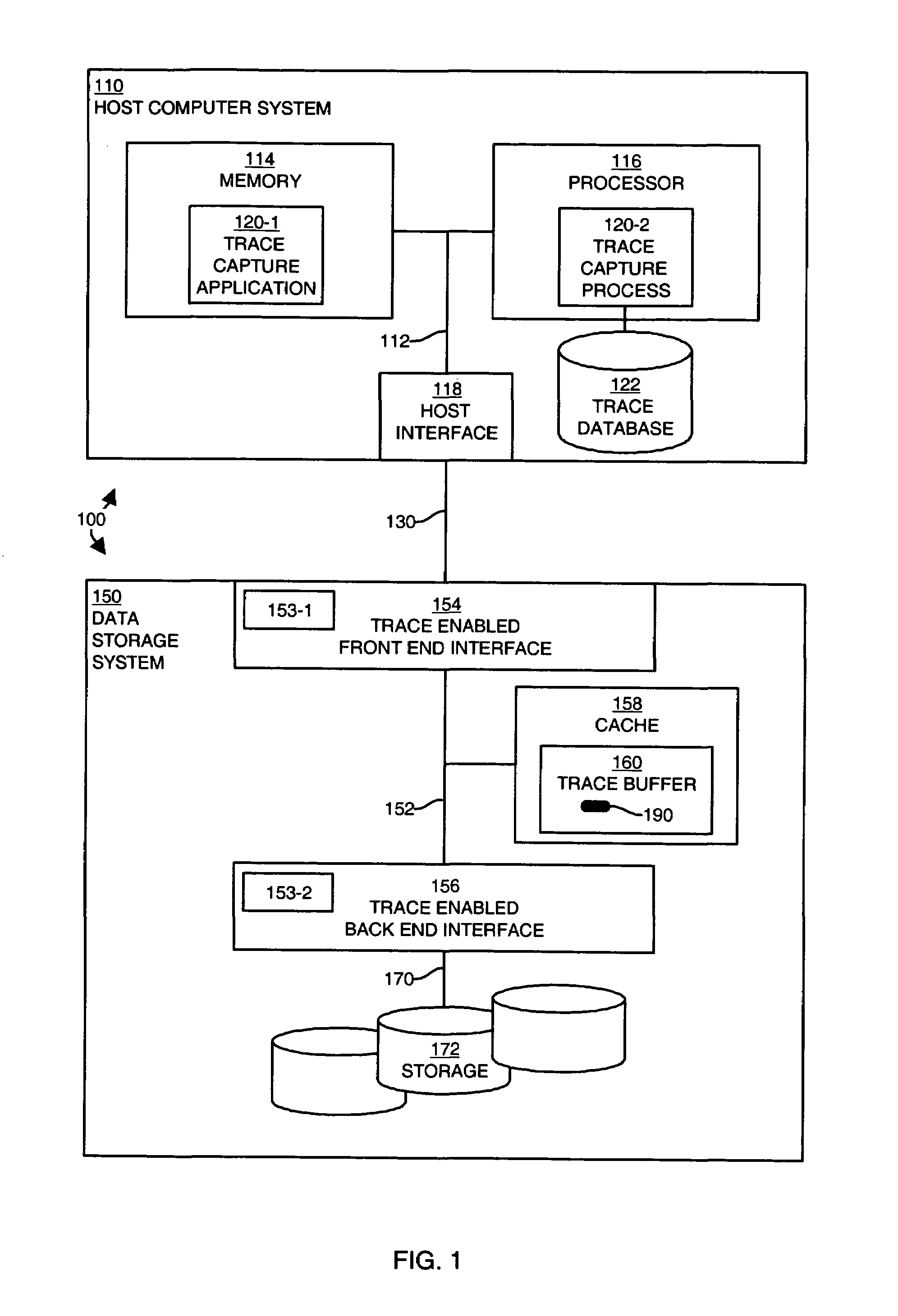Methods and apparatus for accessing trace data
a trace data and trace buffer technology, applied in the field of systems for accessing trace data, can solve the problems of limited size and/or capacity of trace buffers within the cache memory of data storage systems, insufficient utilization of trace data in cache memory, and inconvenient use of trace buffers in cache memory
- Summary
- Abstract
- Description
- Claims
- Application Information
AI Technical Summary
Benefits of technology
Problems solved by technology
Method used
Image
Examples
Embodiment Construction
[0047]Embodiments of the present invention provide unique mechanisms and techniques to allow automated, continuous, remote and substantially real-time access to trace data produced within a trace buffer in a data storage system. Embodiments can operate concurrently during execution of one or more software programs in trace mode in the data storage system to produce such trace data.
[0048]In particular, preferred embodiments of the invention provide a trace capture process which may perform either in a remotely operating host computer system coupled to a data storage system, or which may perform within a data storage system itself (e.g., within a service processor console in the data storage system). The data storage system is equipped with an event trace routine configured according to embodiments of the invention which is able to access trace data and / or trace buffer pointer information for a trace buffer when called upon to do so by the trace capture process. Using the event trace ...
PUM
 Login to View More
Login to View More Abstract
Description
Claims
Application Information
 Login to View More
Login to View More - R&D
- Intellectual Property
- Life Sciences
- Materials
- Tech Scout
- Unparalleled Data Quality
- Higher Quality Content
- 60% Fewer Hallucinations
Browse by: Latest US Patents, China's latest patents, Technical Efficacy Thesaurus, Application Domain, Technology Topic, Popular Technical Reports.
© 2025 PatSnap. All rights reserved.Legal|Privacy policy|Modern Slavery Act Transparency Statement|Sitemap|About US| Contact US: help@patsnap.com



